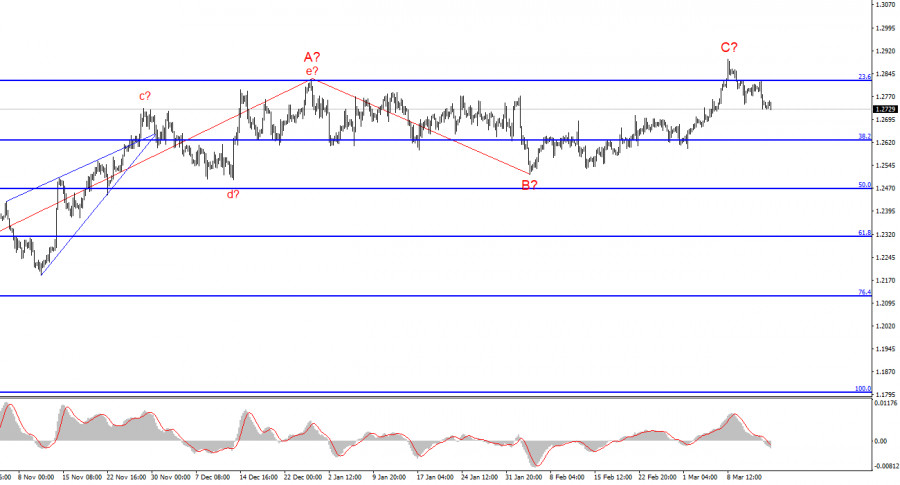
The US dollar ended the week with cautious optimism. The greenback strengthened against the euro and the pound, but this doesn't provide solid grounds for us to confirm further downward waves for both instruments. The EUR/USD pair encountered its first obstacle on its way to wave 1 or A low, which stopped the decline. On the other hand, the GBP/USD pair is reluctantly falling.
A few important events and reports took place. The market continued to digest the outcomes of the European Central Bank meeting, although there was not much to digest. The ECB will start lowering rates in June if the current inflation trajectory persists. Several Governing Council members publicly expressed support for a rate cut before the summer, but they remain in the minority for now.

The ECB council began a discussion on when to reduce interest rates, council member Olli Rehn said on Friday. Take note that the decision to ease policy is very important for the European economy. If rates are trimmed earlier than scheduled, this could negatively affect the pace of reducing inflation. This would require keeping rates at "restrictive" levels for longer than necessary, which would put pressure on economic growth. If rates are cut too late, inflation may fall below 2%, which should also be avoided, as the ECB was focused on boosting inflation before the pandemic. Therefore, discussions will continue for several months until June.
Almost all ECB policymakers have stated in the past month that more economic information is needed to make a decision on rates. This undoubtedly refers to inflation, wage growth rates, labor market conditions, and unemployment. In my opinion, the market has already priced in the ECB rate cut in June. Now everyone is focused on the Federal Reserve, which may further delay the start of the rate cut cycle in the future. I believe that the factor of inflated market expectations for Fed rate cuts will continue to support the US dollar, as the euro previously benefited from the same factor. However, reality does not match market expectations – there is no talk of a global Fed rate cut. I expect both instruments to fall further.
Wave analysis for EUR/USD:
Based on the conducted analysis of EUR/USD, I conclude that a bearish wave set is being formed. Wave 2 or b is complete, so in the near future, I expect an impulsive downward wave 3 or c to form with a significant decline in the instrument. An internal corrective wave is currently being formed, which could have already ended. I am considering short positions with targets around the level of 1.0462, which corresponds to 127.2% according to Fibonacci.
Wave analysis for GBP/USD:
The wave pattern of the GBP/USD instrument suggests a decline. I am considering selling the instrument with targets below the 1.2039 level, because I believe that wave 3 or c will start sooner or later. However, unless wave 2 or b ends, the instrument can still rise to the level of 1.3140, which corresponds to 100.0% according to Fibonacci. A successful attempt to break through the level of 1.2877, which is equivalent to 76.4% Fibonacci retracement, will indicate that the market is ready to increase the demand for the instrument. However, at this time it is futile, so the construction of wave 3 or c may have already started.
Key principles of my analysis:
Wave structures should be simple and understandable. Complex structures are difficult to work with, and they often bring changes.
If you are not confident about the market's movement, it would be better not to enter it.
We cannot guarantee the direction of movement. Don't forget about Stop Loss orders.
Wave analysis can be combined with other types of analysis and trading strategies.
The material has been provided by InstaForex Company - www.instaforex.com #















 Download NOW!
Download NOW!
No comments:
Post a Comment